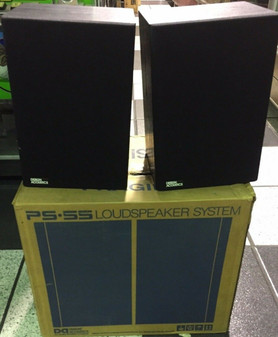Product Description
The acoustic suspension woofer provided an elegant solution to the age-old problem of bass distortion in loudspeakers caused by non-linear, mechanical suspensions in conventional loudspeakers. The state-of-the-art at the time of AR's invention was the bass reflex speaker, which boosted bass response for a given amount of cone travel by directing sound energy from the rear of the speaker cone through a port in the cabinet "tuned" for reinforcement of the direct signal from the front of the cone by the signal from the rear of the cone. Among the drawbacks of that system are the stringent design parameters for successfully achieving accurate bass reinforcement, requiring great precision and, with the technology of the day, large cabinets. Some loss of accuracy ("smearing" or "vooming" of low frequencies) was inevitable and the results of specific designs were not entirely predictable. Long hours with slide rules and prototypes drove up the development costs of new designs, keeping them out of popular price ranges. High fidelity woofers were also vulnerable to damage from extreme low frequency signals. Those issues were finessed with the invention of the acoustic suspension woofer.
The acoustic suspension woofer (sometimes known as “air
suspension”) used the elasticity of air within a small, sealed enclosure
of about 1.7 cu ft (48 L) to provide the restoring force for the woofer
cone. The entrapped air of the sealed-loudspeaker enclosure -— unlike
the mechanical springs of conventional speakers—provided an (almost)
linear spring for the woofer's diaphragm, enabling it to move back and
forth great distances (“excursion”) in a linear fashion, a requirement
in the reproduction of deep bass tones. The disadvantage of this
arrangement is low efficiency; since the restoring force is large with a
large woofer in a small cabinet, the cone must be massive to keep the
resonant frequency in the required low bass region. The AR-1s were
about a factor of 10 less efficient than other (physically much larger)
existing speakers with the same bass response, but since higher power amplifiers were becoming available about the
same time, this was a reasonable trade-off to get good bass response
from a relatively small speaker.
















